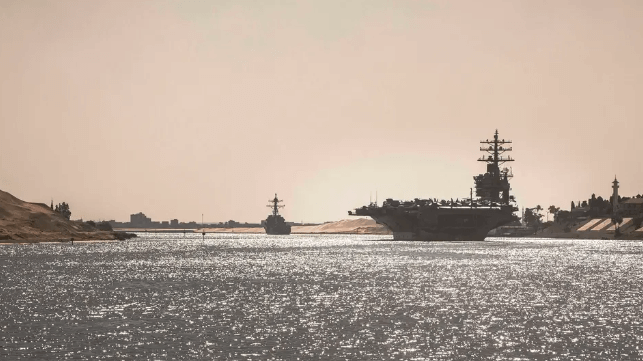Carrier USS Eisenhower Enters Persian Gulf

On Sunday, the Eisenhower Carrier Strike Group transited through the Strait of Hormuz and into the Persian Gulf, sending a clear message to Iran about American intentions to defend maritime security.
"While in the Arabian Gulf, the IKECSG are patrolling to ensure freedom of navigation in key international waterways while supporting CENTCOM requirements throughout the region," said Central Command in a statement.
The carrier's transit through this maritime flashpoint follows shortly after news of attacks on two Israeli-linked vessels, the boxship CMA CGM Symi and the product tanker Central Park.
USS Dwight D. Eisenhower and her escorts were first dispatched to the Eastern Mediterranean and were expected to relieve USS Gerald R. Ford. However, as Israel's campaign against Iran-backed terrorist organization Hamas continued in Gaza, the Pentagon extended the Ford Carrier Strike Group's deployment.
Ford remains on station in the Eastern Mediterranean to deter Iran-backed Lebanese militant group Hezbollah, which has previously used rockets and missiles to attack Israel during periods of heightened tension. During the current period of fighting, Hezbollah has not joined the conflict at full scale, though border clashes have occurred.
While Ford remained on station, Eisenhower headed south through the Suez Canal on November 4 (top). She transited the Strait of Bab El-Mandeb and headed onwards to the Arabian Sea, where she could provide deterrence against further Iranian involvement in the conflict.
According to USNI, the decision to send Eisenhower through the closely-watched Strait of Hormuz marks a break from recent policy. During the long years of war in Iraq and Afghanistan, the U.S. maintained two carriers in the Persian Gulf to provide air support and deterrence. However, the Navy has not had any carrier presence there since 2021, when Nimitz exited for the last time.
